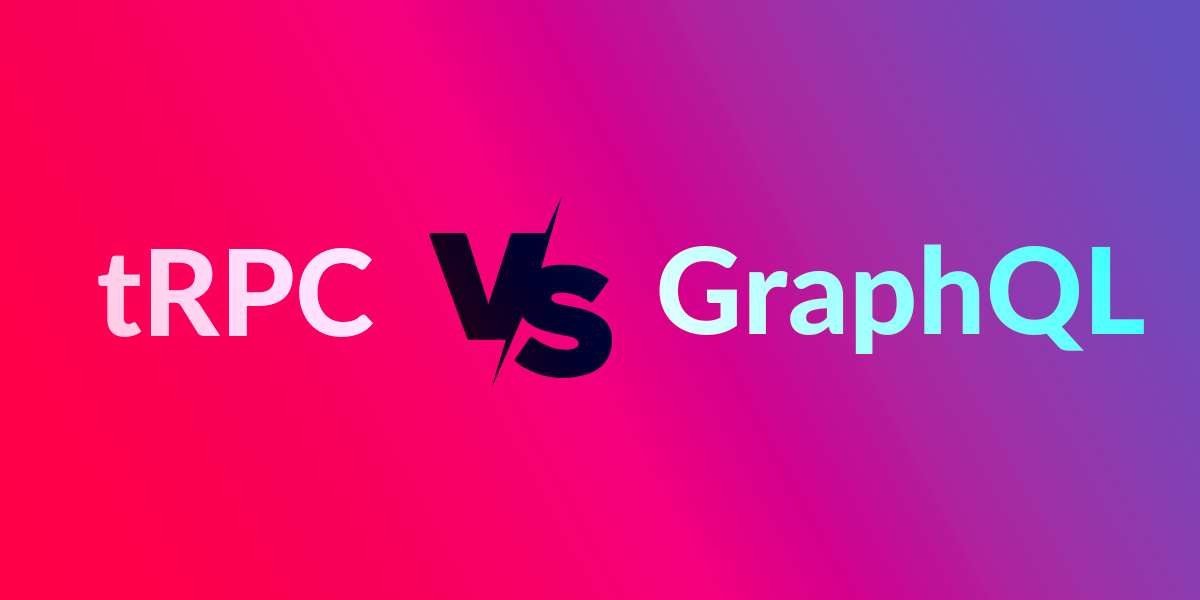In E-commerce Development
Let's compare two popular technologies, TRPC and GraphQL, and help you decide which one is the best fit for your next project.

Management

In today's world, building robust and scalable web applications has become more critical than ever. To achieve this, developers rely on various technologies and frameworks to simplify their work and improve performance. One of the most significant challenges developers face is selecting the right technology for their project. So, let us start with TRPC vs GraphQL comparison.
What is TRPC?
TRPC (Transport RPC) is a modern and lightweight framework for building high-performance, scalable, and fault-tolerant services. It is built on top of HTTP/2 and supports bi-directional streaming. TRPC is designed to make it easy for developers to build efficient services by eliminating the need for manual low-level optimization. TRPC offers a simple and intuitive API, making it easy to learn and use.
TRPC's key features include:
- Support for HTTP/2, which offers improved performance and reduced latency.
- Bi-directional streaming support for real-time applications.
- Automatic generation of client and server code using TypeScript.
- Support for middleware, which allows developers to add additional functionality to their applications.
What is GraphQL?
GraphQL is a query language for APIs that was developed by Facebook in 2012. It offers a flexible approach to querying data by allowing clients to specify the exact data they need. GraphQL has gained popularity due to its ability to improve performance by reducing over-fetching and under-fetching of data. GraphQL is not a framework, but rather a specification for building APIs.
GraphQL's key features include:
- The ability to fetch only the required data, reducing network overhead and improving performance.
- Strongly typed schema that enables clients to discover available data and operations.
- Supports real-time subscriptions and allows clients to receive updates as soon as data changes.
- Provides a powerful and intuitive query language that makes it easy for developers to work with APIs.
TRPC vs. GraphQL: Comparison
Data Fetching
GraphQL offers a powerful and flexible data fetching mechanism that allows clients to retrieve only the data they need. This approach reduces the amount of data transferred over the network and improves performance. TRPC, on the other hand, offers a more traditional RPC-style data fetching mechanism, which requires clients to fetch all the data they need in a single request. While TRPC supports streaming, it is not as flexible as GraphQL's subscription mechanism.
Type Safety
GraphQL provides a strongly typed schema that enables clients to discover available data and operations. This feature provides developers with better tooling and reduces the likelihood of runtime errors. TRPC also offers a strong type system, but it is not as comprehensive as GraphQL's type system. With TRPC, developers need to define their types manually.
Performance
Both TRPC and GraphQL offer excellent performance. TRPC's use of HTTP/2 and bi-directional streaming makes it a great choice for real-time applications that require low latency. GraphQL's ability to fetch only the required data reduces network overhead and improves performance. In terms of raw performance, TRPC is faster than GraphQL, but this may not be noticeable in most applications.
Ease of Use
TRPC's API is straightforward and intuitive, making it easy to learn and use. TRPC also offers automatic code generation using TypeScript, which eliminates the need for manual boilerplate code. GraphQL's query language can be more challenging to learn, but once mastered, it offers a powerful and flexible way of working with APIs.
Which One to Choose?
Choosing between TRPC and GraphQL depends on your project requirements. If you need to build real-time applications that require low latency, TRPC may be a better choice. TRPC's bi-directional streaming and HTTP/2 support make it an excellent option for these types of applications. Additionally, if you prefer a more traditional RPC-style approach to data fetching, TRPC may be a better choice for your project.
On the other hand, if you need to build APIs that offer a flexible way of querying data, GraphQL may be a better fit. GraphQL's ability to fetch only the required data reduces network overhead and improves performance. Additionally, if you value type safety and the ability to discover available data and operations, GraphQL may be a better option for your project.
Ultimately, the choice between TRPC and GraphQL depends on your project's specific requirements. Both technologies offer excellent performance and ease of use, so it is important to evaluate your project's needs before making a decision.
To conclude
In conclusion, TRPC and GraphQL are both excellent technologies for building scalable and performant web applications. TRPC is a lightweight framework that offers a traditional RPC-style approach to data fetching and supports bi-directional streaming. GraphQL is a query language for APIs that offers a flexible way of querying data and supports real-time subscriptions.
When choosing between TRPC and GraphQL, consider your project's specific requirements. If you need to build real-time applications that require low latency and prefer a traditional RPC-style approach to data fetching, TRPC may be a better choice. If you need to build APIs that offer a flexible way of querying data and value type safety and the ability to discover available data and operations, GraphQL may be a better option.
Regardless of which technology you choose, both TRPC and GraphQL offer excellent performance and ease of use. As with any technology decision, it is essential to evaluate your project's needs carefully and make an informed decision based on those requirements.
References
- TRPC documentation: https://trpc.io/docs/
- GraphQL documentation: https://graphql.org/learn/
- GraphQL vs REST: https://www.apollographql.com/blog/graphql-vs-rest-5d425123e34b/

